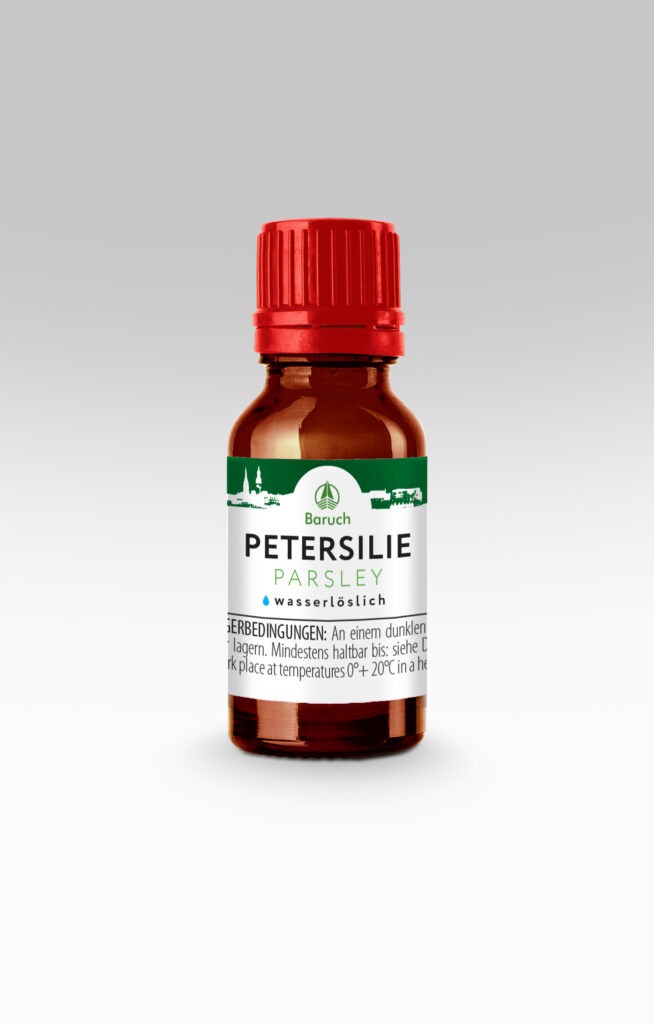Among the cultivated, sown types of parsley, three are distinguished – ordinary leaf, Neapolitan leaf and root. In Russia, gardeners most often grow root parsley, commonly known as curly parsley or garden parsley.
The seeds are probably the most pharmacologically valuable plant material for parsley. They show their beneficial properties in treating and preventing the following health problems:
Gastritis, arteriosclerosis, diabetes mellitus, gastric ulcer, prostate adenoma, gallstone disease, chickenpox, pyelonephritis, diseases of the genitourinary system, heart defects, scarlet fever, measles, neuroses, gastrointestinal diseases, cardiac arrhythmias, kidney problems, heart failure, obesity. The essential oil of parsley is most commonly used in pharmacological practice. However, because CO2 extracts are virtually the improved counterpart of the corresponding essential oils, it is possible to extend the proven healing properties of parsley seed essential oil to a similar extract.
Several years ago, Rosportebnadzor banned the use of some types of curly parsley extracts and classified them as narcotic drugs. Obviously this was a mistake as this plant material does not contain any significant concentration of narcotic compounds. Without a whole cycle of additional and very complex chemical manipulations and transformations, such compounds cannot be obtained from parsley extracts.
Since ancient times, the herbs and roots of parsley have been used in the kitchen as a spicy and aromatic additive, fresh or frozen, or as a decoration for various dishes. Either fresh raw materials or dried and crushed plant material are used as spicy-aromatic additives, but sometimes also essential oil from parsley seeds. Parsley extract works well in vegetable salads, vegetable, fish and meat dishes, broths, various soups, in canned cucumbers, tomatoes, peppers, etc. Perfect for preparing various food concentrates, dry mixes and for canning fish and meat. Indispensable for the preparation of various sauces, ketchups and flavored vinegar.
Due to the high biological activity of the CO2 extract from parsley seeds, it is quite possible to use it for a special, preventive diet, especially for diseases of the gastrointestinal tract, the urogenital system and for people who are overweight.
Parsley seed CO2 extract is a yellow oily liquid, sometimes with a brownish tinge. The aroma is sweet, spicy with woody and herbaceous notes. The taste is sweet, slightly hot to spicy.


Chart 1. The main components of the CO2 extract of parsley
| NAME | CONTENT IN% OF THE AMOUNT OF VOLATILE COMPONENTS | EFFECT |
|---|---|---|
| Apiol | 30 | Diuretic, antipyretic. Strongly antispasmodic. |
| Alpha and beta pinene | 20 | It easily penetrates the epidermis and irritates the nerve endings, causing an intense rush of blood. Has an expectorant effect. Antiseptic. |
| Myristicin | 10 | Psychotropic, diuretic. |
| Elemicin | 4 | Weak hallucinogen. |
| Limonene | 2,6 | Antibacterial, antidepressant and immune stimulating. Shows anti-inflammatory and antioxidant properties. Effective against fungi, mold and bacteria. Perfume scent. Effective repellant. Not recommended in cosmetic preparations for sensitive and allergy-prone skin. |
| Myrzen | 1,5 | Gastroprotective agent, diuretic, pacemaker. |
| Beta-Felandren | 1,4 | It is used in medicine and in the perfumery industry as a fragrance with a mint-citrus scent. |
| Beta-carotene | 1,1 | Provitamin A. |
| Gamma-linolenic acid | 1,1 | Refers to omega-3 acids. Improves the general condition. An unsaturated essential fatty acid from the class of omega-3 fatty acids. It has a membrane protecting, angioprotective effect. Immunomodulatory, improves brain metabolism. |
| Linoleic acid | 1,4 | An essential unsaturated fatty acid of the omega-6 class. It has anti-inflammatory, vasoconstrictor, and aggregating effects. If there is no balance between omega-3 and omega-6 fatty acids, competitive processes can arise that influence the metabolism. |
In cosmetics, parsley seed extract can be used to treat dermatitis, cellulite, age spots, lentigo and dark circles under the eyes. CO2 extract from parsley seeds can be used in the following types of cosmetic preparations: to remove acne, blackheads, freckles, age spots; to combat couperose manifestations and skin inflammation; to normalize the water and fat metabolism in problematic and oily skin; to reduce the activity of the sebum glands of the scalp; Removal of puffiness under the eyes and swelling of the eyelids; as an antioxidant and antiaging ingredient; an ingredient that smooths fine lines.
Parsley is native to the Mediterranean countries and was distributed in the wild in both the countries of North Africa and the southern coast of Europe. Today it is probably the most widespread and ubiquitous cultivated herb in the world.
In ancient times, parsley was often used instead of or together with celery, mostly as an ornamental or medicinal plant. In Europe, parsley was not considered as a vegetable until the 14th century.
Chart 2. Application rates, recommendations for the use and storage of CO2 extract from parsley
| Food usage rates | Item А100: 0.001-0.005% (10-50g per ton) Water-soluble microemulsions EMA1: 0.1-0.5% (1-5l per 1000l or 1-5ml per liter) Water-soluble microemulsions EMA5: 0.02-0.1% (0.2-1l per 1000l or 0.2-1ml per liter) |
| Application rates in cosmetics | Item А10: 1-3% Item А100: 0.1-0.3% Item EMA1: 10-30% Item EMA5: 2-6% |
| Recommendations for use | It is recommended to add CO2 extracts in the final stages of preparation, in the cooling phase of the end product. |
| Storage Instructions | Storage advice |
